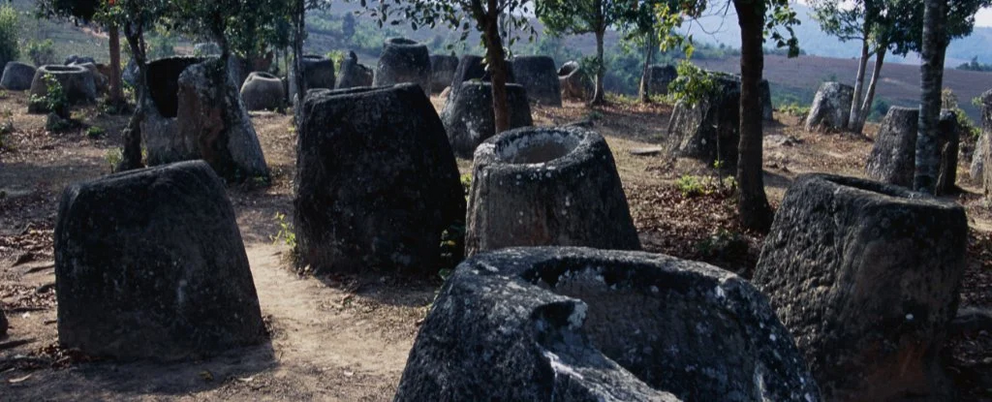We finally know the true age of these huge, mysterious jars scattered in Laos
In total, there are thousands of them – a giant landscape of strange, hollowed jars, carved from ancient stone. Some have lids. Most are open to the sky.
These surreal cauldron-like megaliths in Laos are known as the Plain of Jars, an archaeological relics whose original purpose is still shrouded in mystery, their significance long forgotten.
For several decades, researchers have suggested the jars were a part of prehistoric burial practices. Local legends and lore suggest the jars, some of them up to three metres (nearly ten feet) tall, were used for storage of food, alcohol, and rainwater, among other things.
For tragic reasons, it's been almost impossible for modern archaeologists to study the sites and discover the truth.
The Plain of Jars region and Laos as a whole still bear the terrible legacy of millions of unexploded bombs dropped by the US Air Force in the 1960s.
To this day, hundreds of innocent Laotians die every year as a result, decades after the conflict's official end.
And so the mystery of the Jars endures, with fewer than 10 percent of the megaliths having been investigated, researchers say.
In recent years, however, expeditions within selected safe sites have commenced, and archaeologists are now making important discoveries about these unusual objects, some of which stand alone, while others are clustered in great groups.
"Until now, it has not been possible to estimate when the jars were first placed on the landscape or from where the stone was sourced," an international team explains in a new paper detailing the latest research.
According to their analysis – using a technique called Optically Stimulated Luminescence (OSL) to date the ancient stone – the jars were positioned potentially as early as the late second millennium BCE.
Evidence discovered of varied mortuary practices at some of the sites – including primary burial of human skeletons, and also bundled or jarred collections of bones – was also dated by radiocarbon dating, suggesting activity between 9–13th century CE.
On the face of the most recent evidence, this means the Plain of Jars pre-dates the most recent and confirmed discoveries of mortuary practices, by potentially thousands of years. As for what that means, we don't yet know.
"The data presented here strongly suggests that the placement of the megaliths preceded the mortuary activity around the jars, indicating re-use of the sites and enduring ritual significance," the researchers write.
However, previous research has suggested the mortuary rituals may be as old as the stone placements themselves, so it's possible wider searches would reveal a more continuous timeline of human activity.
Another puzzle that remains is how the jars got to their current positions.
Examination of megaliths in one site suggests the most likely quarry was 8 kilometres (5 miles) away from where the jars ended up – so just how the ancient culture that created these objects (estimated to weigh up to over 30 tonnes) managed to also transport them, is yet another unknown.
Still a mystery for the ages, then, and no mistake.
The findings are reported in PLOS One.

